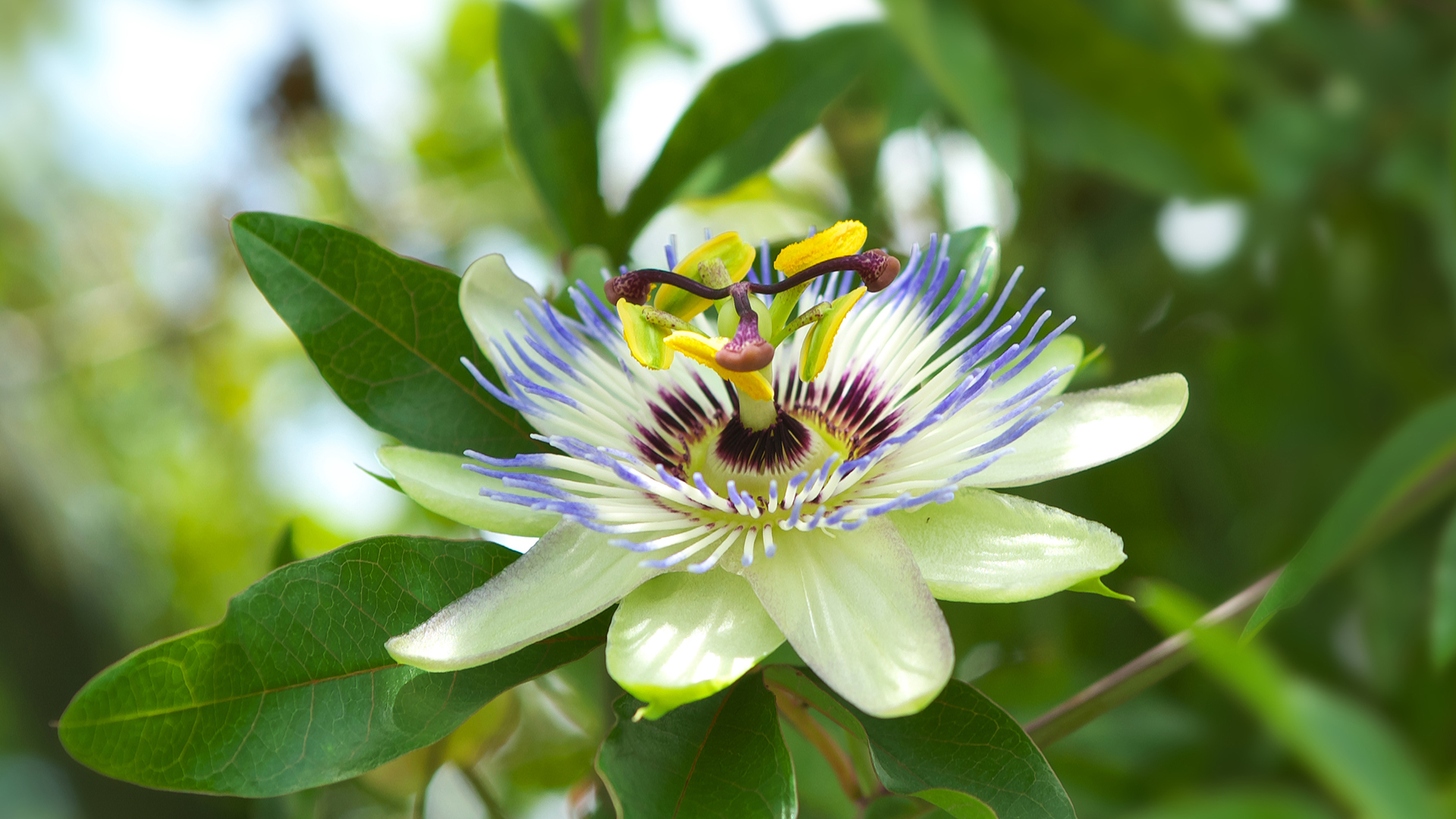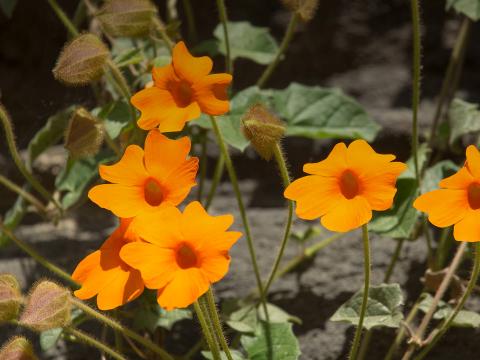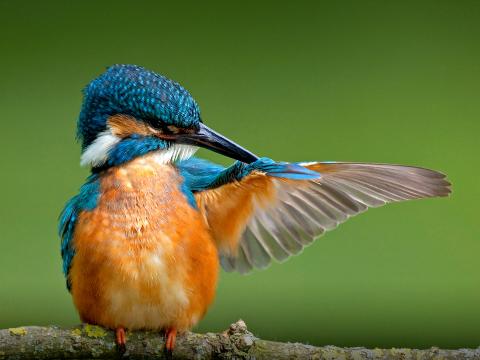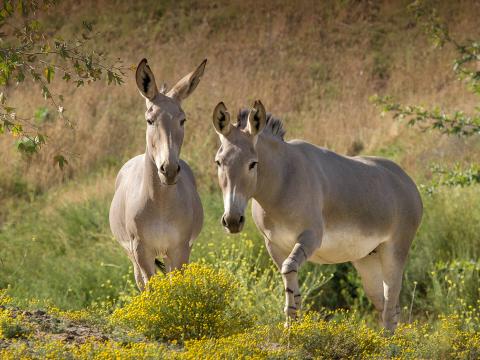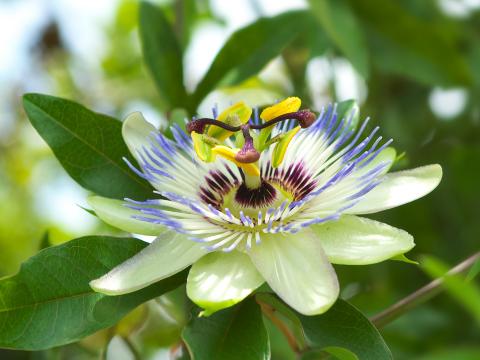Passion Vine
- DIVISION: Tracheophyta
- CLASS: Magnoliopsida (dicots)
- ORDER: Violales
- FAMILY: Passifloraceae
- GENUS: Passiflora
- SPECIES: About 400
OVERVIEW
Shallow-rooted and herbaceous vines, passion vines spread and cling with tendrils that grow from the leaf axils. Various species grow throughout tropical areas of the Americas. Purple passionflower P. incarnata, also known as maypop, is native to the southern part of the United States. Another familiar passion vine is P. edulis, a South American native that has naturalized in Hawaii, where it is called liliko'i.
Depending on the species, the elaborate, exotic-looking flowers are pollinated by bees, hummingbirds, wasps, or bats. These vines attract butterflies, too. Some butterflies lay their eggs on passion vines, and their caterpillars ravenously consume the plants. Certain passion vines develop nubs on their leaves that look like butterfly eggs—a turnoff to many a pregnant flutterer, since female butterflies shy away from impending competition and rarely deposit their eggs where other eggs are in view.
CHARACTERISTICS
Passion vines hug trees, fences, and structures, entwining their tendrils as they climb. Their tree-lobed leaves are dark green on top and pale on the undersurface. Large flowers are showy and intriguing, with male and female reproductive parts held high over a wreath of finely frilled filaments and three-dimensional layers of sepals and petals. In warm areas, passion vines are perennial, but in cooler areas they may die back to the ground in winter. Sweet-smelling, edible fruits are egg-shaped.
CULTIVATION
A number of cultivars are cultivated for ornamental garden plants. In your garden, passion vines will climb on trellises, arbors, walls, and fences, as well as on trees and other plants. They grow best in full sun except in very hot areas.
CONSERVATION
Habitat destruction threatens some passion vines in their native habitats. The IUCN has categorized 20 South American species as Vulnerable or Endangered. On the other hand, some species have spread outside their native range and become invasive species in other countries.
By supporting San Diego Zoo Wildlife Alliance, you are our ally in saving and protecting wildlife worldwide.

